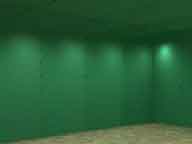How To Build A Wine Cellar
How To Build A Wine Cellar Step By Step
Step 1: Location of the Wine Cellar

The location that you choose will have a future impact on the cost of maintaining your cellar.
A wine cellar should be placed in the coolest and most humid place in your home. The closer you are to the 55°-58° F temperature and 55-75% humidity that your wine will need, the smaller size cooling unit you will need and the lower the overall cost will be.
The heat gain calculation for your wine cellar takes into consideration the surrounding environment that will affect the wine cellar. Contact us for a free heat gain calculation and we will send you a quote for the recommended system for your space.
Step 2: Installing Studs
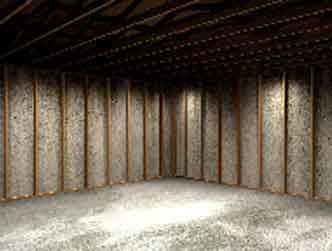
If this is new construction you will need to stud the space to frame out your wine cellar. Start by sealing the concrete foundation walls prior to installing studs. (Stop: Review Step 4 now, if you decide to use the 6 mil vapor barrier with new construction, you must do that step during studding. If you choose spray foam then continue on with this step as outlined.) Then use either 2×4 or 2×6 construction. The 2×6 construction is used when you want to increase the insulation value in order to minimize cooling unit size and energy consumption. This is similar to adding additional insulation to your home in order to minimize your monthly utility bills. You should obtain a permit and follow all local, state, and national building codes when building your home wine cellar.
Step 3: Soffits
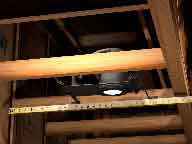
If you build a soffit to cover ducting, piping, or other obstructions, it is important to note that the lighting installed in the soffit should be placed far enough away so that it does not interfere with the finished racking and/or ducting depth, including depth of crown molding. You will want to ask for the final depth of your racking including the crown molding at this location and then make sure to allow for the size of the ring on the light fixture as well. A rule of thumb is to leave a 1” gap from the front of the crown molding to the closest edge of the ring on the can light. You also want to make sure to use IC can lights so you can insulate around them.
Step 4: Rough-in Refrigeration for Air Handler
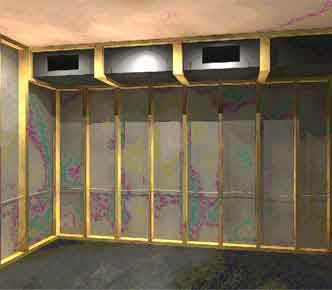
If you are purchasing a ducted Air Handler you will need to run the ducting and line set at this stage. The ducting will be in the wine cellar, running to the air handler that is normally placed in a mechanical room. The line set is then run from the air handler location to the condenser location, standard condensers are located outdoors, but indoor option is available. You will also need to run a drain line and electric at this time.
Step 5: Rough-in Refrigeration for Ductless Split
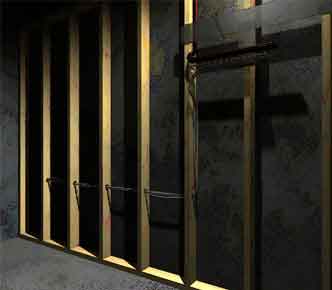
If you are purchasing a ductless split you will need to run the line set at this stage. The line set is run from the ductless split location to the condenser location, standard condensers are located outdoors, but indoor option is available. You will also need to run a drain line and electric at this time. Note: The mounting plate shown is for clarity and is not installed until unit is on site and cellar wall is complete.
Step 6: Select Your Insulation & Vapor Barrier
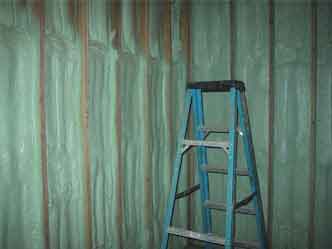
There are two common methods for wine cellar insulation and vapor barriers. Spray foam or 6 mil vapor barrier and fiberglass batts. Spray foam is normally more expensive, but it will prevent the possibility of a puncture mark in your vapor barrier (as a 6 mil vapor barrier is not necessary when using spray foam) caused by someone inserting screws, running wire, plumbing, etc. into or through the wall from outside the wine cellar. With non-shrinking closed cell spray foam the screw will not compromise the enclosure and the foam will expand to fill all the crevices to ensure a tight seal. We do not recommend any specific brand over another, but Comfort Foam is one brand that will work for this application. Ensure there are no air gaps between the insulation and drywall for either method.
After the vapor barrier has been installed you will need to put insulation in the stud and joist cavities. The most common insulation used is fiberglass batts. In a 2×4 wall cavity using fiberglass will provide you with an R-13 insulation value. In a 2×6 wall fiberglass will provide you with an R-19 insulation value. The entire cavity must be “fluffed” with insulation leaving no air filled cavities.
Step 7: Vapor Barrier For New Construction
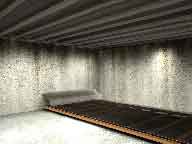
If this is new construction and you are not going to use spray foam, then it is recommended that you install a 6 mil vapor barrier on the back side of your wall studs before lifting them into position. You will also need to wrap your ceiling joists (and floor if not on slab) as shown. In some areas the local code specifies all vapor barriers must be installed on the warm side of the cellar. In those areas we highly recommend you switch to the spray foam insulation.
Step 8: Wrapping the Walls & Filling Holes
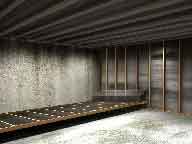
Make sure to leave excess vapor barrier at the corners so that you can wrap it, overlap the seams and tuck tape (not duct tape) them shut. Then fill all holes in studs and joists with fire rated penetration sealant to reduce air movement. Tuck Tape UV resistant adhesive is a company that sells this product. We are not recommending this company specifically, just an option so you know what you are looking for.
Step 9: Wall Coverings
